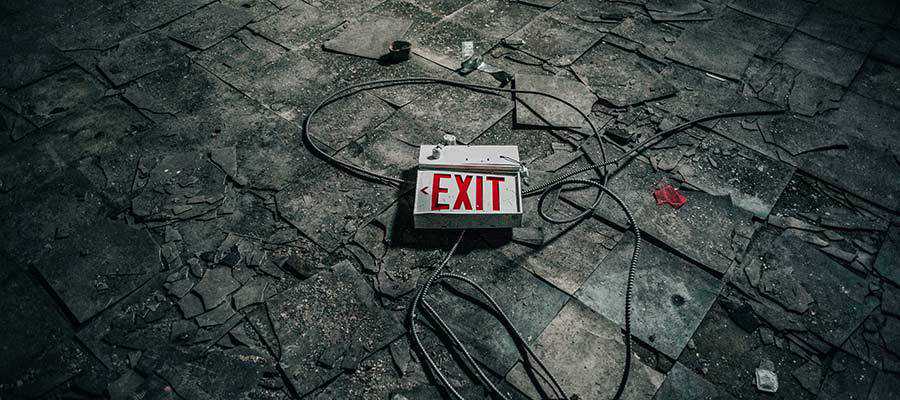The 5 Biggest Pains in Website Maintenance
As the web has evolved over time, website complexity has trended upward. Why? Technology has allowed us to do more than ever.
Between content management systems (CMS), code frameworks and other technological advancements, high-end functionality is at our fingertips. This has raised the bar in not only what we can achieve, but what our clients expect of us as well.
While this evolution has brought a lot of positives, it has also made website maintenance all the more difficult. It’s the result of so many disparate pieces being brought together. In some ways, it’s also the price of taking advantage of the latest and greatest techniques.
With that, let’s take a look at (in no particular order) five of the more painful maintenance-related issues that many modern websites face.
Ever-Changing APIs
A lot of websites depend on third-party APIs these days. They enable us to connect with providers such as Google Maps, Mailchimp and virtually every social media network out there.
Each API is different and, as you might expect, have their own unique quirks. And they also release new versions that one might view as a double-edged sword.
On one hand, it’s great to see a particular API evolve and add new features. There is a downside, though. Sometimes these changes require us to update our own implementations. Failure to do so can lead to a broken feature.
As an example, several years ago Twitter made an API change that resulted in a lot of issues for third-party providers. More recently, Instagram’s updated API meant users had to reauthenticate their apps in order to display feeds on their website.
It can be a major pain to keep up with all of these changes for even one website. If you manage multiple websites that use various APIs, you may not find out about a change until it’s too late.

Abandoned or Poorly-Maintained Plugins
A healthy variety of plugins is part of what makes an open-source CMS thrive. If developers are out there creating new functionality for a platform such as WordPress, it becomes more attractive to new users.
But variety itself does not guarantee quality or even a lengthy existence. Because anyone can publish a plugin, that means living with a lot of uncertainty. As platforms evolve, a particular plugin may not come along for the ride.
For web designers and their clients, this results in occasionally having to reinvent the wheel a bit. If a plugin we’ve chosen is buggy, no longer maintained by its author or both, a replacement must be found.
The more complex the plugin, the more painful it is to replace. It’s not just finding a new plugin, however. Any customizations made around the previous one will have to be refactored.
The whole process could become expensive and time-consuming.

Web Hosting Nightmares
We depend so much on web hosts. How much? Think of it this way: no matter how well-built a website is, it can’t overcome substandard hosting.
And, when hosts don’t hold up their end of the bargain, things can quickly become a nightmare. Frequent outages, security holes or lackluster support make our jobs that much harder. Especially so, considering that web designers are often caught in the middle.
We’re the ones who are typically the go-between for our client and the hosting provider. It could mean lots of time waiting in a chat or (even worse) hanging on the phone for answers.
Meanwhile, the website in question may or may not be available. Good times.

Dealing with Old Websites
The longer you’re in this industry, the more potential you have for “old” projects to still be floating around the interwebs. Quite often, it’s for a client who is on a budget or just doesn’t see the need for a redesign.
While an older site in itself isn’t a problem, the way it was built could be. Designers and developers often learn through experience. The techniques we used five years ago are likely miles away from how we’d do it today.
Thus, when one of these golden oldies needs maintenance, it can bring back every mistake we might have made on the project. It can make one kick themselves for not being able to predict the future.
On the bright side, digging through old code can make you better appreciate how far you’ve come.

The Mysteries of an Inherited Site
The oft-repeated “box of chocolates” reference from the film Forrest Gump could easily be applied to websites we inherit from other designers. You really have no idea what you’re dealing with until you examine every bit of code. And, even then, there can still be surprises.
What’s really fun is that an inherited site could leave you to work through every one of the items on this list. Abandoned plugins, outdated API calls, a poor hosting environment and other assorted issues could be lurking beneath the surface.
It takes a bit of bravery and a lot of patience to work on these types of projects. That’s why it’s important to charge accordingly for the challenge.

How Pain Can Lead to Growth
The above “pains” all have a few things in common. First, they are simply a part of our job – fun or not. While completely static websites still exist (and are making a comeback), there are still requirements for dealing with third-party apps and services. And no website is immune to hosting foibles.
In addition, each of these items provides an opportunity for web designers to learn and grow. The experiences we have can help us better understand how to deal with similar issues in the future.
That’s a good thing because the web’s complexities aren’t going away anytime soon.
The post The 5 Biggest Pains in Website Maintenance appeared first on Speckyboy Design Magazine.





